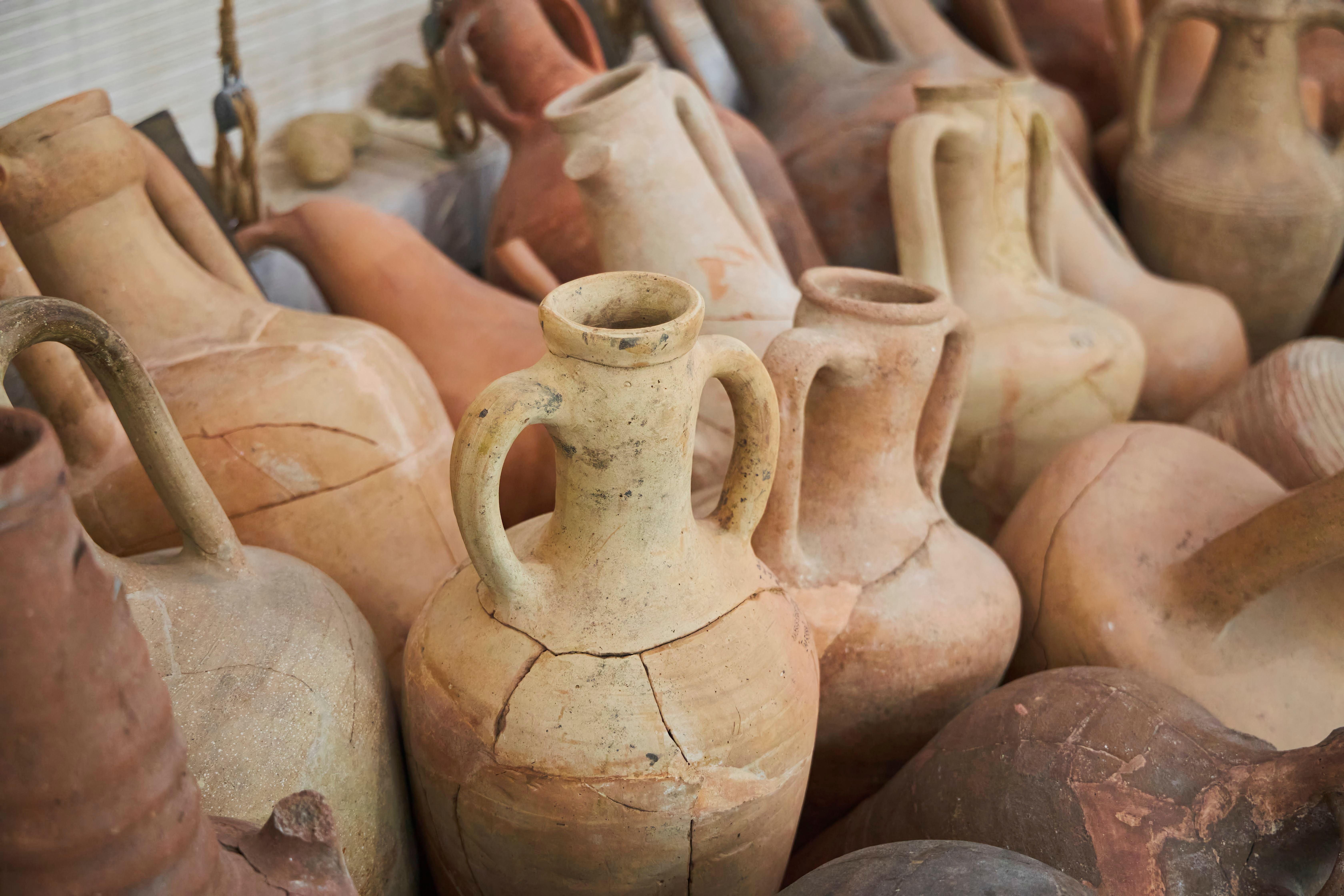Scientists use FT-IR, XRD and GC to Analyze Pewsey Hoard Vessels
A team of scientists recently analyzed a collection of late Roman vessels discovered in the United Kingdom.
The Pewsey Hoard is a collection of Late Roman copper-alloy vessels discovered in 2014 in the Vale of Pewsey in Wiltshire, United Kingdom. It consists of a copper-alloy cauldron rimmed with iron and another containing four scale pans packed with plants.
Ancient jugs and amphorae | Image Credit: © Fotoproff - stock.adobe.com

Research published in Scientific Reports last year studied the organic and inorganic substances on the interior and exterior of the vessels using multiple analytical techniques. The researchers, led by Luciana da Costa Carvalho of the University of Oxford, aimed to see if organic residues could be of historical value.
What sets the Pewsey Hoard apart from other Late Roman hoards in Britain is the presence of scale pans and plants, mostly due to the mineralized plant remains that indicated symbolic and geographic importance. The corrosion on the vessels varied in color and texture, which hinted at exposure to different environments throughout the deposition process.
Analyzing Corrosion
Various techniques were used to characterize the corrosion, namely Fourier-transform infrared (FT-IR), power X-ray diffraction (XRD), and gas chromatography with quadrupole time-of-flight mass spectrometry using a thermal separation probe(GC-QTOF-MS with TSP).
Scientists put the samples through FT-IR. It was eventually found that there were strong bands at 3445 and 3336 cm−1 representing N–H asymmetric and O–H stretching vibrations, a medium broad band centered around 1639 cm−1 encompassing N–H amide and C=C vibrations and a strong peak at 1030 cm−1 characteristic of silicates. There was also an absence of bands around 2900–2880 cm−1, indicating that long-chain aliphatic compounds may not be present or detectable with this technique.
Following this, XRD confirmed silicates in the corrosion, identifying quartz within the sample, explaining the sample’s hardness. The technique also helped identify four mineral phases in Vessel A. These presences could reflect two scenarios. One where the alloy used to make the vessel where lead corroded more over copper, or another where the lead carbonates stem from Romans using the material as makeup or medicine. As for Vessel A’s exterior corrosion, it was characterized as 86% quartz and 14% Cu2S (chalcocite).
The organic compounds recovered from Vessel A’s contained methenamine, 1-methyl naphthalene, phthalate, and n-hexadecanoic acid. PAHs present in the samples indicated the possibility of the soil facilitating bacterial decay when mixed with rainwater, which could explain PAHs and the chalcocite layer.
Vessel B contained substances such as hexadecenoic acid, siloxanes, and other substances. However, there were no compounds with a nitrile function, which are some of the most characteristic nitrogen-containing compounds in silty and clay soils. This, combined with long-chain alkyl nitriles found in the exterior corrosion of Vessel A, may indicate that this area of the hoard was once rich in organic matter.
Quartz was also identified on the exterior of Vessel B. The interior was incredibly well-protected, thus explaining the existence of plant remains. Analyzing the bottom sample of the vessel led to squalene, cholesterol and its oxidation products being identified.
By using multiple techniques while analyzing the Pewsey Hoard, the scientists were able to identify organic and inorganic phases. “Microclimates reflecting how the hoard was assembled and included biomarkers for animal fat found in the most protected area of the hoard from contact with the deposition environment,” the researchers wrote (1).
Reference
(1) Carvalho, L. d. C.; Henry, R.; McCullagh, J. S. O.; Pollard, A. M. Unlocking the organic residues preserved in the corrosion from the Pewsey Hoard vessels. Sci. Rep. 2022, 12, 21284. DOI: https://doi.org/10.1038/s41598-022-24400-5
Childhood Obesity Serum Samples Analyzed Using Fourier Transform Infrared Spectroscopy
April 9th 2024A group of scientists led by Zozan Guleken of the Gaziantep University of Science and Technology in Gaziantep, Turkey looked into the blood serum composition of childhood obesity (CO) tissues using Fourier transform infrared (FT-IR) spectroscopy.